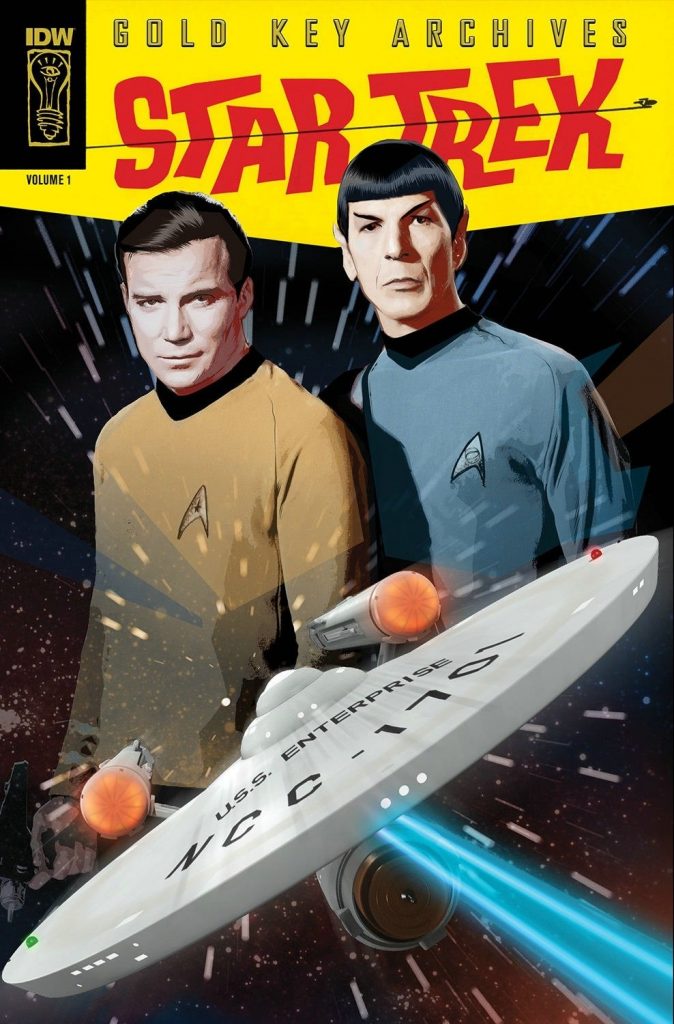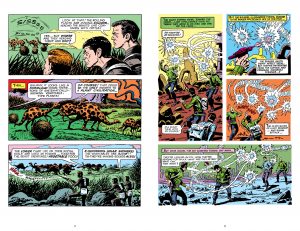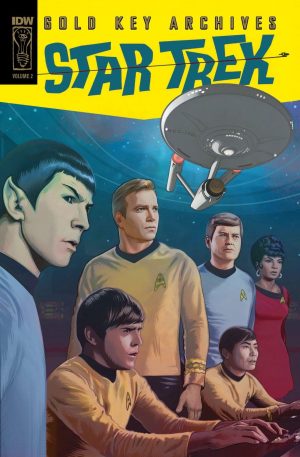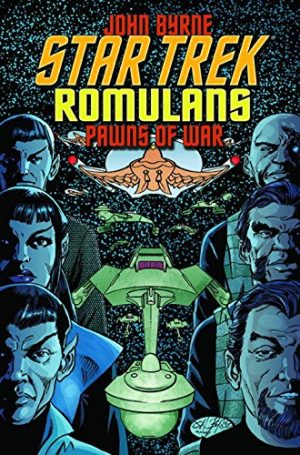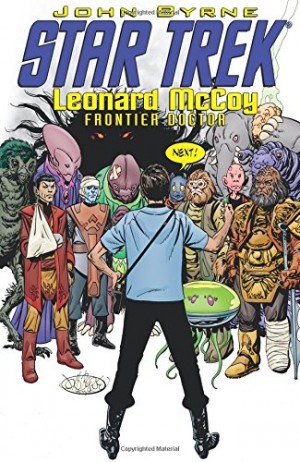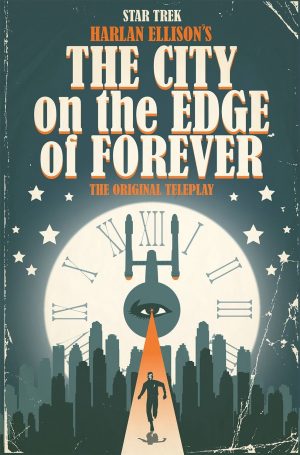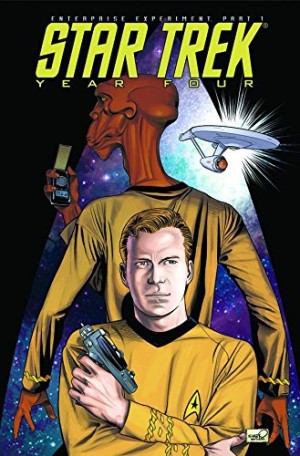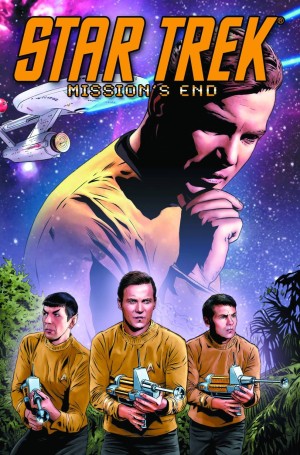Review by Win Wiacek
When the original Star Trek TV show ran between 1966 and 1969 it was a moderate success, only increasing popularity after going into syndication, running constantly throughout the 1970s and developing a devoted fanbase. A comic series ran almost a decade after the show’s cancellation, yet only six issues were released during the show’s entire run. Published between July 1967 and December 1968, they are gathered in this first Star Trek Gold Key Archive.
These stories are cracking little space opera yarns, but occupy an odd position in the hearts of Star Trek fans as the earliest ones bear little resemblance to the TV version. That’s because Dick Wood had not seen the show when commissioned to write the comics, and both he and Italian artists Nevio Zaccara – and later Alberto Giolitti – received only the briefest of outlines and scant reference materials from the producers. You’ll notice strange sights and apparent contradictions, but all derived from sensible assumptions by creators doing their best with what meagre information they had.
If you’re likely to have your nostalgic fun spoiled by wrong-coloured shirts or “Lasers” rather than “Phasers”, think alternate universe or read something else. Ultimately, you are the only one missing out.
The quirky collation of cosmic questing commences with ‘The Planet of No Return’ as the Enterprise enters a region of space oddly devoid of life and encounters predatory spores from the planet designated Kelly-Green. It’s a world of horror where vegetative life contaminates and transforms flesh. After the survivors of the landing party escape deadly doom and return to the safety of space, there is only one course of action Captain Kirk can take…
‘The Devil’s Isle of Space’ finds the ever-advancing Enterprise trapped in a space-wide electronic net. The technology is part of a system used by an alien race to pen death-row criminals on asteroids, where they are eventually to be executed in a truly barbarous manner. Sadly, it’s hard not to interfere in a sovereign culture’s private affairs when the doomed criminals hold Federation citizens hostage and want Kirk to hand his ship over to them.
Bombastic and spectacular, ‘Invasion of the City Builders’ has the legendary Alberto Giolitti take the artistic reigns. Prolific, gifted and truly international, his work and the studio he created produced a wealth of material for three continents. His gritty linework adds a visual terseness and tension, as seen when the Enterprise crew land on a planet where automated machines programmed to build new homes and roads have been out of control for a century, forcing the organic population to the edge of extinction.
Social commentary gives way to action and suspense when ‘The Peril of Planet Quick Change’ finds the crew investigating a world of chimerical geological instability, only to see Spock possessed by beings made of light.
‘The Ghost Planet’ has the Enterprise encountering a world ravaged by radiation rings. The twin rulers are eager for the star men’s help, but don’t want them hanging around to help rebuild the devastated civilisation. A little investigation reveals that most of the carnage is due to eternal warfare.
Wrapping up this first hardback is ‘When Planets Collide’. It’s a classic conundrum involving two runaway worlds inexorably drawn to each other and mutual destruction. What might have been a simple observable astronomical event becomes fraught with peril when the Enterprise crew discover civilisations within each world that would rather die than evacuate their ancient homes.
Bold, expansive and epic, these are great stories to delight young and old alike and well worth making time and space for. There’s more in Volume 2.
